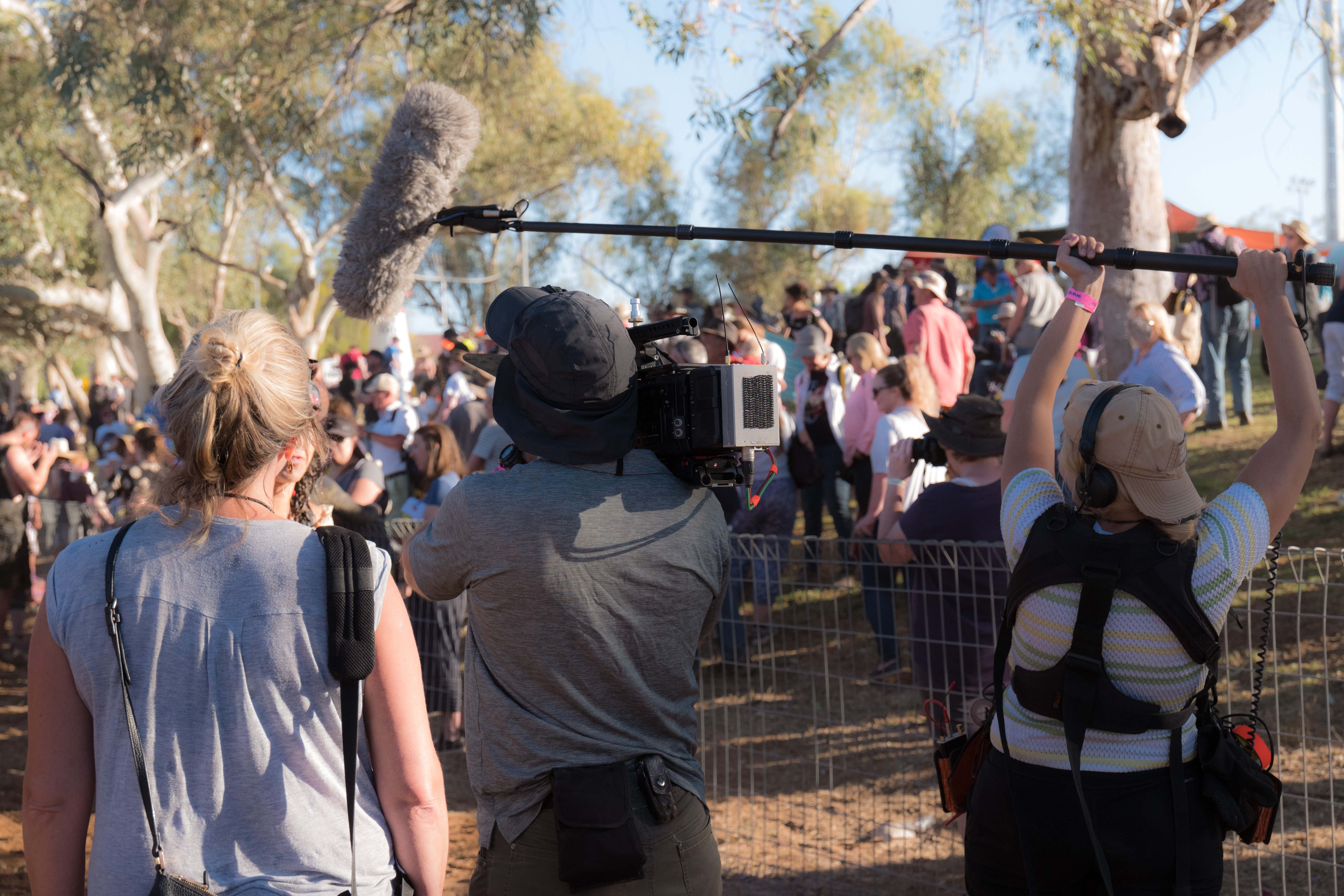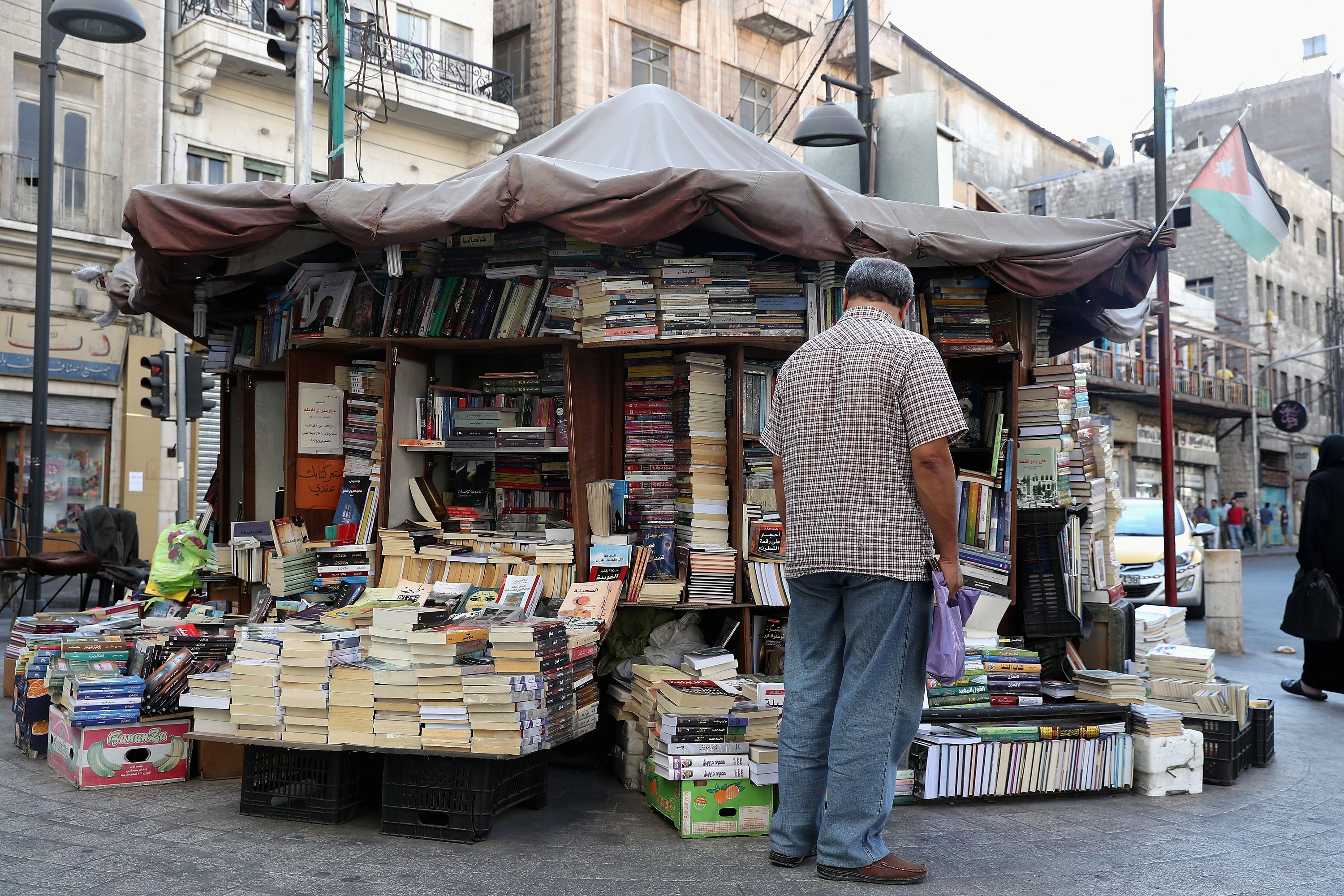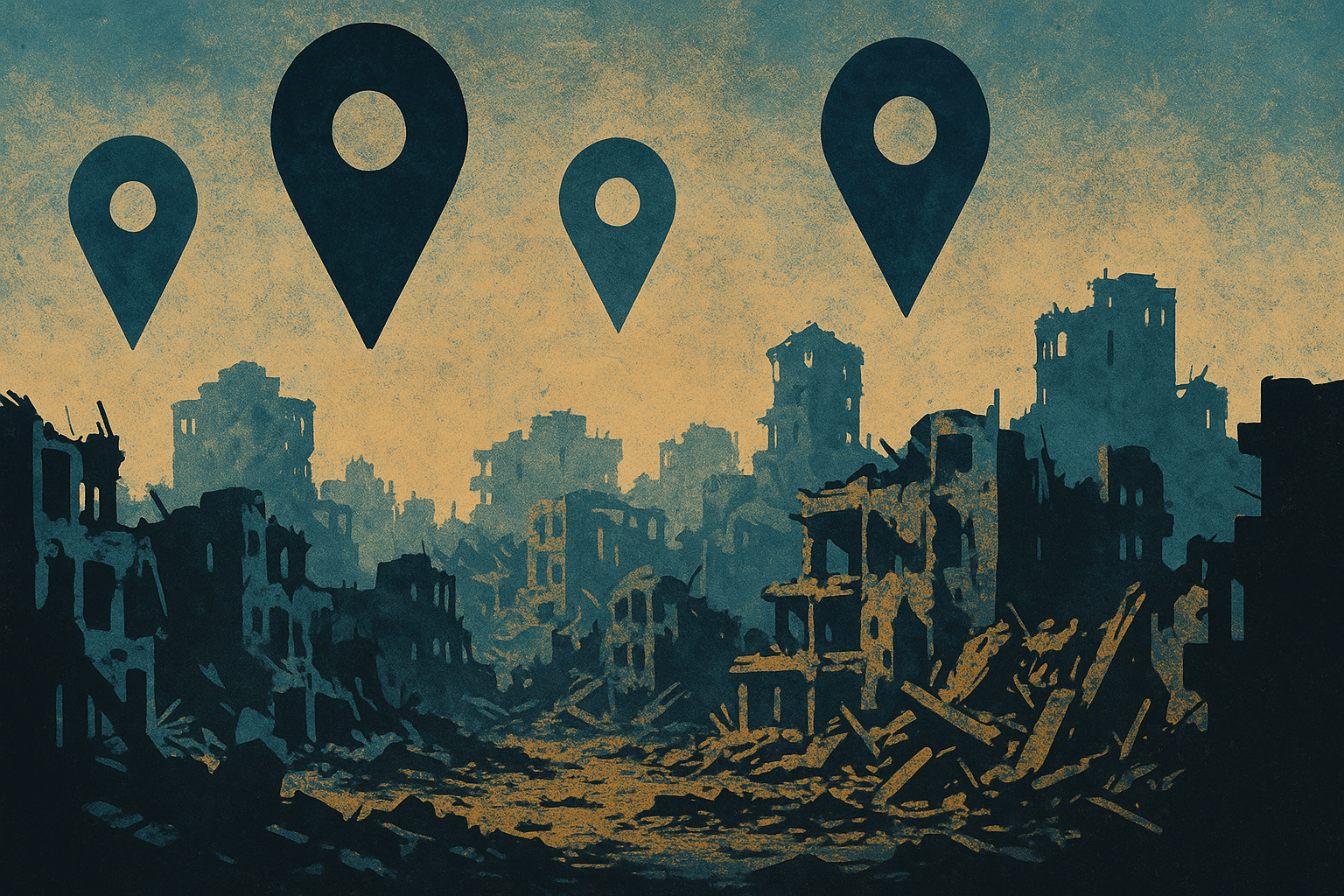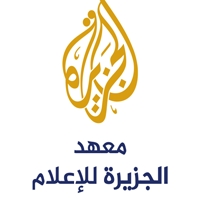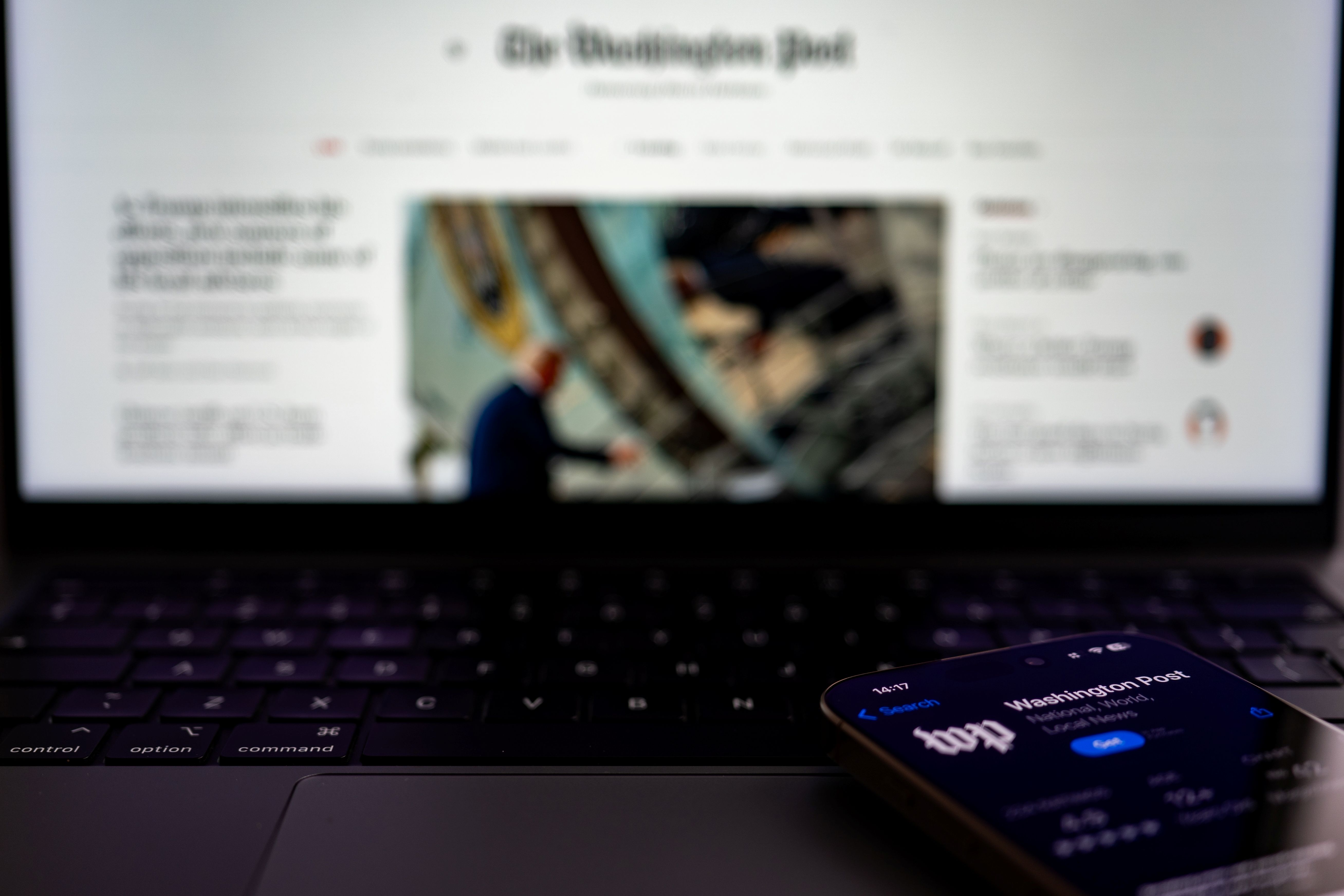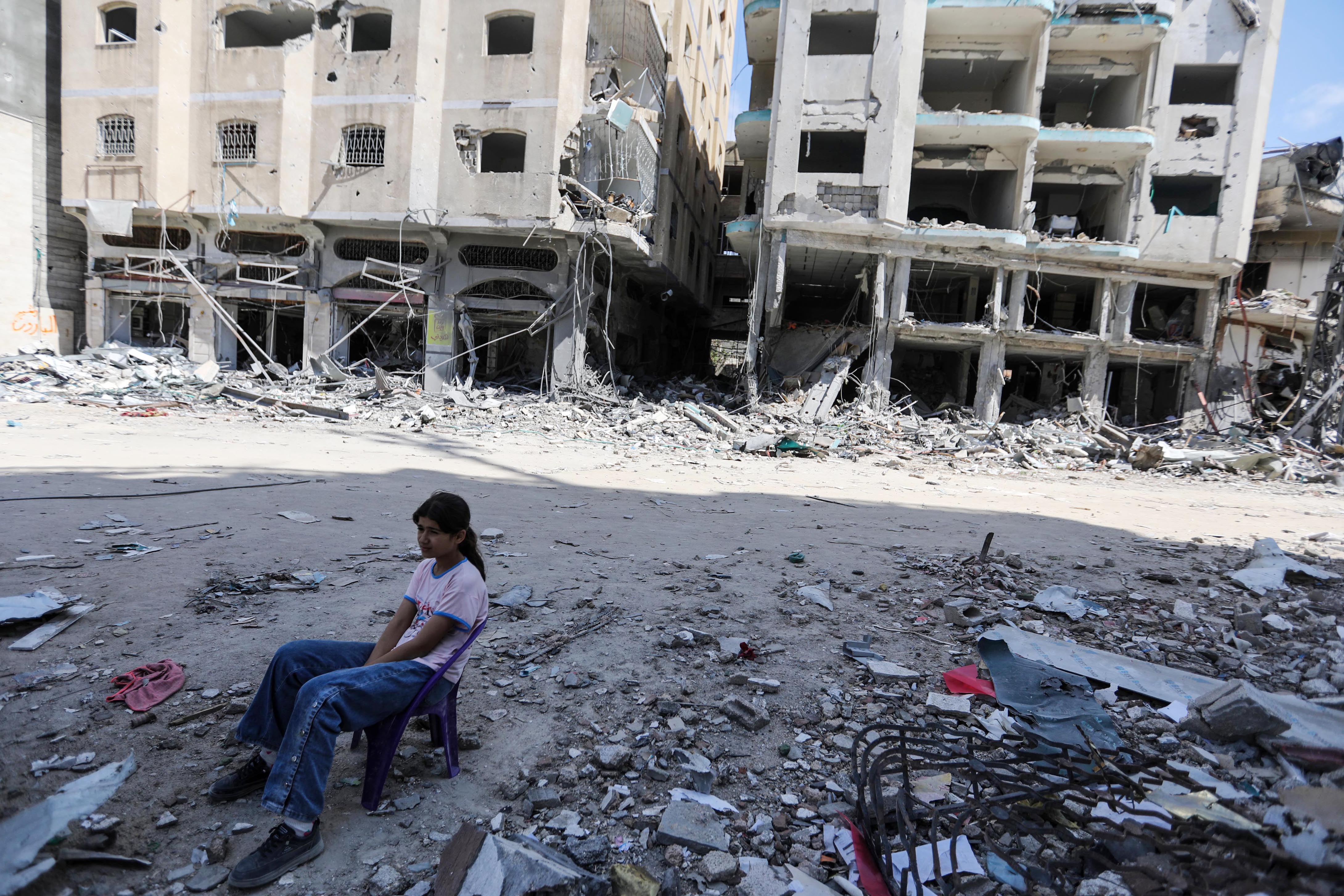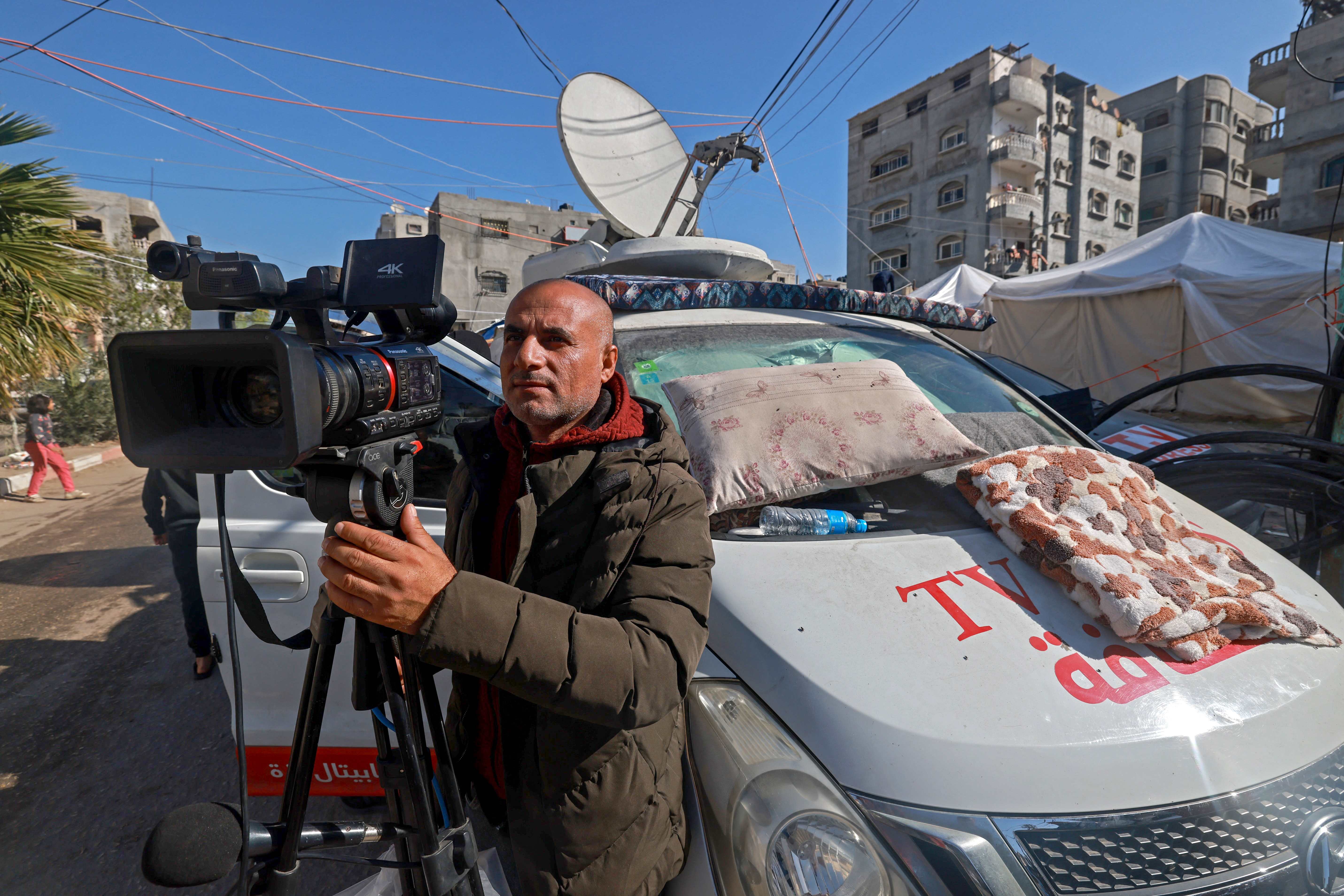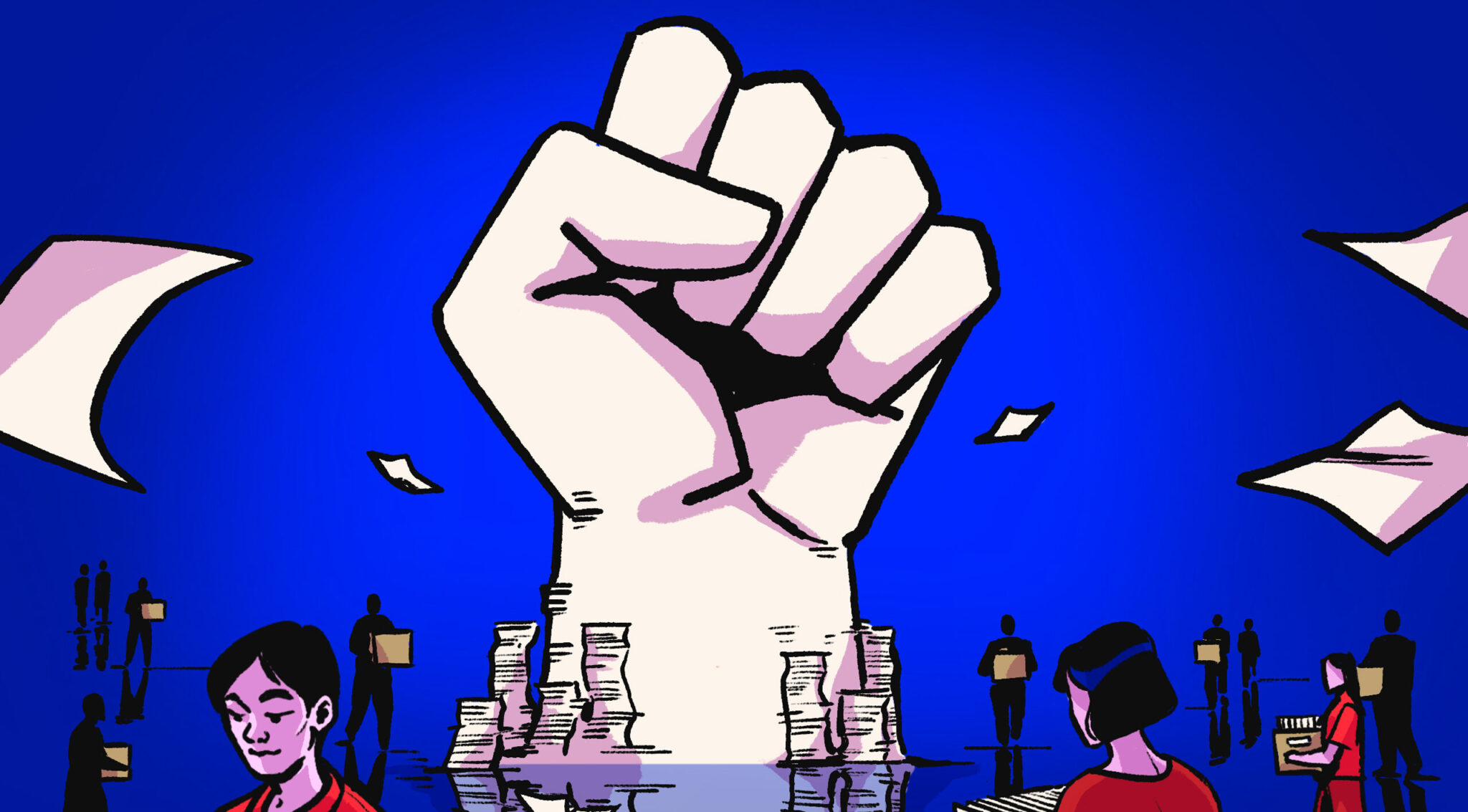ما الذي يجعل حدثاً ما وقع في فضاء معين خبراً يُتداول في وسائل الإعلام وعلى ألسنة الجمهور وتعمل من أجل إنتاجه واستهلاكه كتيبة من البشر؟
شغل هذا السؤال الباحثين في الدراسات الإعلامية لعقود طويلة ولن تنتهي محاولات الإجابة عنه في أي وقت قريب. فتجدده مرتبط بتغيرات حتمية إما أن تكون فكرية واجتماعية، أو سياسية، أو تغيرات في الوسائط الإعلامية نفسها أو خليط من كل ذلك.
قد يبدو السؤال نفسه معزولاً عن الواقع، بعيداً عن إنسانية العمل الإعلامي. فالخبر لا يحدث في مكان ما خارج حياة الناس، لكن صحفياً أو محرراً أو ممولاً يقرر أن هذا الحدث يصلح أن يكون خبراً، أو أن هذه القصة تستحق أن تُروى، إلا أنه يبقى ضرورياً لفهم وتفكيك منظومة العمل الصحفي لاسيما في حالة مثل التي نعيشها من سيولة مفاهيم القيمة الصحفية.
في دراستهما التأسيسية حول بنية الأخبار الأجنبية، قدم يوهان غالتونغ وماري روج عام 1965 ستة من المعايير التي تركز عليها الصحف في انتقاء أخبارها (1)، في محاولة منهما للإجابة عن سؤال "كيف يصبح الحدث خبراً؟"
قدم يوهان غالتونغ وماري روج دراسة تأسيسية حول طريقة انتقاء الأخبار، تحدد معايير "كون الحدث سلبياً" واعتباره "غير متوقع" وارتباطه "بالدول والأشخاص ذوي الأهمية الكبيرة" مرجعا للاختيار.
من بين أهم المعايير التي شملتها الدراسة "كون الحدث سلبياً" واعتباره "غير متوقع" وارتباطه "بالدول والأشخاص ذوي الأهمية الكبيرة". تحولت الدراسة إلى منهج تأسيسي في تعريف وتحديد "المعايير الصحفية"، وما الذي يرقى لأن يكون "ذا قيمة خبرية".
لكن يبدو أن كل هذا لم يكن صحيحاً! غالتونغ نفسه يخبرنا بهذا في إحدى مقابلاته (2) ويؤكد عليه مراراً، فيقول إن دراسته كانت تحذيراً من الاستمرار في اختيار الأخبار بالطريقة المتبعة، وليست دليلاً عملياً للطريقة التي يجب أن يكون عليها الأمر.
خلاصة نظرية غالتونغ في رأيي الشخصي أنها تضع عبء حراسة البوابة الصحفية على جوهر الأحداث، وتعتبر أن كل حارس للبوابة - وهو الشخص الذي يقرر أي الأحداث تستحق أن تكون خبراً - يتعامل مع الأحداث بشكل أولي، بمعنى اعتبار الصحفي في هذه الحالة مصدراً أولياً للخبر. لذلك تبدو معايير غالتونغ التي نُقِدت ومُحّصت مراراً، على مدار عقود، تميل إلى شكل من الصحافة والإعلام التقليدي الذي لا يضع معايير المنصات الرقمية الجديدة في الحسبان.
قدمت المنصات الرقمية نوعاً جديداً من العاملين/المتعاملين مع الإعلام بإمكانهم صناعة الخبر بطريقة أولية تتجاوز المنظومة الصحفية المعتادة، ولعل المدونات الرقمية وموقع تويتر (في بداياته) قدموا هذا الشكل الثوري من الصحافة بشكل واضح وغير معتاد.
مع توسع وسائط الإعلام ونشأة المنصات الرقمية وتطورها أصبحت النسبة الأكبر من العاملين في الإعلام (حراساً جدداً لبوابات صحفية جديدة) لا ينتمون للطبقة الأولية من صناعة الخبر بشكله التقليدي (مراسلون، ووكالات، وصحفيون)، بل تنتمي إلى طبقة ثانوية تتعامل مع الأخبار الأولية بشكل مُحرِّر وشارح وناقد وساخر، وبالتالي أصبح لدى تلك الطبقة الجديدة مساحة أوسع من انتقاء الأخبار واتساع مساحة الاختيار بين موجات واسعة من الأخبار تصاحبه بالضرورة صعوبة في تحديد المعايير التي تُحدد "القيمة الخبرية".
رغم كل هذه التعقيدات التي تغيِّر وتشكّل معايير اختيار المحتوى الصحفي، يحب الكثير من الصحفيين والمؤسسات التي يعملون بها استعمال كلمة واحدة للتعبير عن المعيار الأهم لاختيار المحتوى الصحفي: التأثير!
رغم كل هذه التعقيدات التي تغيِّر وتشكّل معايير اختيار المحتوى الصحفي، يحب الكثير من الصحفيين والمؤسسات التي يعملون بها استعمال كلمة واحدة للتعبير عن المعيار الأهم لاختيار المحتوى الصحفي: التأثير!
المنصات الرقمية وتغير خريطة القيمة الصحفية
يعرِّف مكتب التسويق الاستراتيجي والاتصالات بجامعة نبراسكا أوماها التأثير impact بأنه أهم معيار صحفي لتحديد جدارة النشر، ويضرب مثالاً على مفهوم التأثير: "تخيل أن الباحثين توصلوا إلى حل فعال وغير مكلف لمشكلة شائعة. كلما زاد عدد المتأثرين، زاد الاهتمام بالخبر" (3).
المنصات الرقمية لها رأي آخر، فالتأثير influence هنا لا علاقة له بشكل طبيعي بالتأثير impact كما في التعريف الصحفي لجدارة النشر. رغم ذلك يستعمل البعض الكلمتين في الفضاء الرقمي بشكل متبادل ويختلط توظيفهما.
التأثير influence الذي تعنيه المنصات الرقمية أراه معنى هوائياً متمايلاً يعبر عن صناعة موجة ما في بحيرة راكدة لخلق دوامات من التفاعل مع الخبر وجذب أكبر عدد من المتابعين وتحقيق أكبر مكسب يمكن التعبير عنه من خلال الأرقام. في حين أن التأثير impact أراه معنى أكثر صلابة يعني في جوهره التغيير؛ أقصد تغيير مسار مجرى المياه أو تثبيت صخرة - ولو صغيرة - في هذا المجرى.
المقصود من الاستعارة السابقة أن الموجات الهائلة من التأثير على المنصات الرقمية ليست قادرة بالضرورة على التغيير. سيكون مآل بعضها إلى السكون والانتهاء حتى مع تحقيقها "أرقاماً كبيرة" لأنها مجرد اضطراب ينتظر اضطراباً جديداً يطغى عليه. أما التأثير الحقيقي يغير شيئاً ما في البنية أو يقدم "حلاً" ولو كان صغيراً.
المنصات الرقمية لها رأي آخر، فالتأثير influence هنا لا علاقة له بشكل طبيعي بالتأثير impact كما في التعريف الصحفي لجدارة النشر. رغم ذلك يستعمل البعض الكلمتين في الفضاء الرقمي بشكل متبادل ويختلط توظيفهما.
ما علاقة هذا بمعايير تقييم المحتوى الصحفي؟ العلاقة واضحة لأي عامل في الفضاء الإعلامي وتحديداً الرقمي منه، فالمنصات فرضت معايير جديدة ربما تبدو غير قابلة للمساءلة والتحدي كتلك التي قدمها غالتونغ قبل حوالي 60 عاماً: مقاييس الأداء metrics.
مقاييس الأداء هي مجموعة من الأرقام الناتجة عن معادلات وخوارزميات لا يعلمها سوى بعض القائمين على المنصات، تعبر في نهاية المطاف عن أداء المحتوى على المنصة وتنقسم حسب نوع المنصة والمحتوى إلى مقاييس مختلفة مثل: عدد المشاهدات، عدد الإعجابات، عدد التعليقات، عدد المشاركات، عدد دقائق المشاهدة، نسبة البقاء، وفي بعض الأحيان عدد مرات إعادة المشاهدة!
يسعى صناع المحتوى في العالم الرقمي إلى عمل خلطة مناسبة لهذه المقاييس وفي كثير من الأوقات تكون هذه الوصفة خليطا من توجيهات المنصة نفسها وتوقعات محللي البيانات وتصورات خيالية عما يمكن أن يحدث.
لقد انتقل قسط كبير من عبء حراسة البوابة إلى شركات تتحكم في المنصات والمحتوى والناشرين رغم تأكيد تلك الشركات على أن الانتشار و"نجاح المحتوى" يعتمد على "مجتمع الجمهور" كأن المجتمع يخلق حركة طبيعية من انتشار المحتوى تشبه مفهوم "اليد الخفية" التي تضبط السوق بشكل طبيعي في نظرية آدم سميث الاقتصادية. الأرقام في هذه الحالة تمثل حجة موضوعية غير قابلة للنقاش والمساءلة، فالجمهور هو الذي يشاهد ويتفاعل ويعلق ويعجب بمحتوى دون الآخر والأرقام هي مصداق ذلك. أو على الأقل هذا ما نظنه.
عام 2021، قُدمت مستندات داخلية كثيرة حول منصة فيسبوك للكونغرس الأمريكي وكشفت عن الكثير حول المنصة وطريقة إدارتها، والأهم من ذلك: حقيقة الخوارزميات ومعادلات الأرقام غير القابلة للمساءلة.
في مقال هام[4] تستعرض واشنطن بوست كيف أعطت خوارزميات فيسبوك الأولوية في انتشار الأخبار لتلك التي تخلق تفاعلاً غاضباً عبر التعبير الغاضب الشهير الذي يعد أحد طرق التفاعل مع منشورات المنصة. يستعرض المقال وعدة مقالات أخرى للصحيفة كيف رعت فيسبوك مشاعر الغضب وأججتها وساهمت في انتشار المعلومات الكاذبة والمضللة، وتُعطي الصحيفة أمثلة لخطورة هذه القرارات وتأثيرها على عدة مجتمعات.
لم تُخفِ المنصات الرقمية أيضاً طريقة تعاملها مع المحتوى المتشابه باختلاف سياقاته لتعطينا دليلاً إضافياً على أن مقاييس الأداء وحدها لا تكفي لتكون معايير لتقييم الجودة الصحفية. يمكن أن نعود بالذاكرة قليلاً لطريقة تعامل شركة ميتا ومنصتيها فيسبوك وإنستغرام مع حدث مثل العدوان على قطاع غزة المحتل في شهر مايو/أيار عام 2021 ويجب أن نقارن هذه الطريقة بالتي اتبعتها المنصات مع حدث الغزو الروسي لأوكرانيا. والأمثلة أكثر من أن تُحصى في مقال واحد، لكن خلاصة التجربة تعود بنا إلى تعليق غالتونغ على المعايير التي ذكرها قبل عقود في دراسته، والمتأمل في المنصات الرقمية يمكنه أن يلمس مشاعر الغضب والسلبية والاستقطاب.
نحو معايير واضحة للقيمة الصحفية
ما الحل الذي يمكن للصحفيين والمؤسسات الصحفية اتباعه، إذاً، في ظل هذه الفضاءات؟
لا يعني الكلام السابق أن وجود معايير للمحتوى الصحفي أمر مستحيل في العالم الرقمي، لكنه ببساطة يعني أن هذه المعايير يجب أن توضع بطريقة إيجابية لا كرد فعل على مقاييس المنصات التي تتغير وتتبدل حسب جداول أعمال ومكاسب تقررها الشركات المتحكمة في المنصات. يجب أن توضع المعايير مع الأخذ بعين الاعتبار طبيعة المنصات والدراية بحقيقة أن الصحفي والمحرر ورئيس التحرير ليسوا وحدهم حراس البوابة الصحفية!
الطريق نحو الحل يبدأ أولاً بالدراية الحقيقية لطبيعة العمل الصحفي الجديد على المنصات الرقمية، وثانياً بالاقتناع أن مفهوم المعايير الصحفية التقليدي غير كافٍ (رغم أنه ضروري) لتقييم المحتوى الرقمي لما وضحنا من أسباب خلال المقال. تأتي بعد ذلك خريطة للتقييم واجب أن تضعها كل مؤسسة صحفية أو منصة إعلامية أو صحفي مستقل أو حتى صانع المحتوى. ينبغي أن تضم الخطة عدة محاور تمثل الأسس التي يمكن تقييم المحتوى من خلالها. يمكن القول إنها عدة نظارات قادرة على تحليل المحتوى حسب معايير تقييم مختلفة. الذي أقترحه في المقال هو ما تنصح به عدة أبحاث (5) ومتخصصون في أن تنقسم هذه المعايير إلى ثلاث مجموعات: معايير المؤسسة الصحفية، ومعايير المحتوى، ومعايير المنصات. وأرى أنها تأتي بهذا الترتيب في خطوات التقييم.
تأتي معايير المؤسسة الصحفية على رأس أولوية تقييم المحتوى الصحفي، ورغم بديهية هذه المعايير ومحوريتها في العملية الصحفية إلا أنها تغيب في أحيان كثيرة عن جلسات تقييم المحتوى وفي أوقات كثيرة يقتصر حضورها على جلسات الرؤية والتخطيط المبدئية لكن سرعان ما تختفي في العمل الدوري خصوصاً مع اعتماد المؤسسات على روافد إخبارية محدودة. فنجد الوكالات تُغرقنا بتغطيات بعينها وأخبار من مناطق متكررة حتى نرى لهذه الأخبار أهمية عاجلة حتى وإن ابتعدت عن روح المؤسسة الصحفية ومعاييرها الخاصة.
تمثل معايير المؤسسة الصحفية الميثاق الذي يربطها بجمهورها، ودوائر اهتماماتها ورسالتها، والوعد الذي تقدمه للمجتمع والفائدة المنتظرة منها. وبقدر اتساق محتوى المؤسسة مع معاييرها يُبنى الولاء لدى الجمهور ويترسخ دور المؤسسة.
الذي أقترحه في المقال هو ما تنصح به عدة أبحاث ومتخصصون في أن تنقسم معايير التقييم إلى ثلاث مجموعات: معايير المؤسسة الصحفية، ومعايير المحتوى، ومعايير المنصات. وأرى أنها تأتي بهذا الترتيب في خطوات التقييم.
بعد ذلك تأتي معايير المحتوى نفسه في المرتبة الثانية من التقييم، وتتمثل في رصانة المادة الصحفية ودقتها من خلال الاعتماد على مصادر أولية أو موثوقة، والتحقق من المعلومات بعدة وسائل، والقراءات الجانبية التي توسع مدار النقاش حول المحتوى ولا تقصره في خبر معزول، والحديث مع المتخصصين، وحماية المصادر وخصوصيتها. هذه النوع من المعايير يجعل المادة الصحفية قادرة على تقديم الفائدة المقصودة والمنافسة في سيل من المحتوى الرديء يمكنها من التميز والبروز.
تكمن أهمية هذا التقييم حسب رأيي في أنها تعطي خريطة لتوجهات المنصات الرقمية بحيث تساعد الصحفيين على تقديم محتواهم الأصلي بطريقة ملائمة - بلا مساومات ضرورية - لتحقيق الانتشار بين جمهورهم المستهدف.
مراجع:
[1] Galtung, Johan, and Mari Holmboe Ruge. “The Structure of Foreign News.” Journal of Peace Research 2, no. 1 (1965): 64–91. http://www.jstor.org/stable/423011.
[2] https://www.theguardian.com/world/2019/jan/18/johan-galtung-news-principles-journalists-too-negative
[4] https://www.washingtonpost.com/technology/2021/10/26/facebook-angry-emoji-algorithm/





